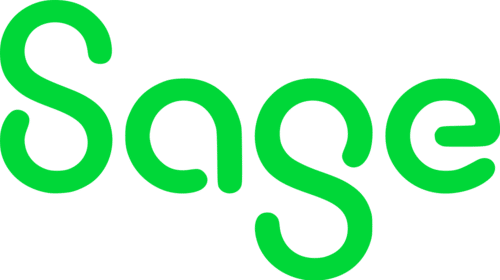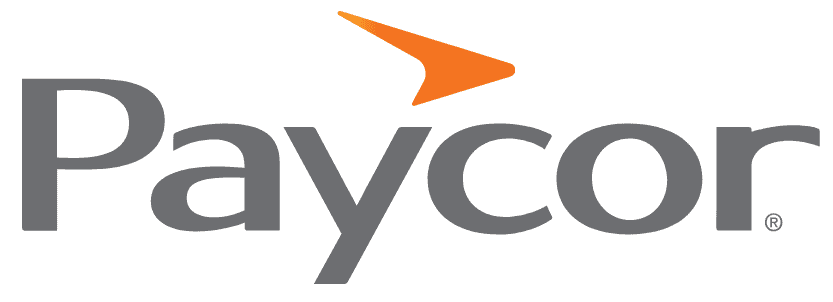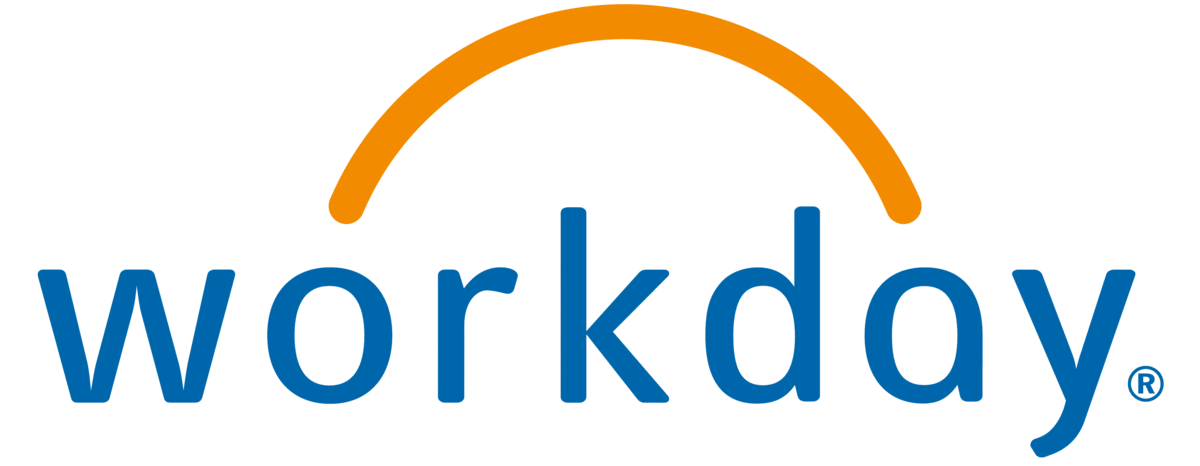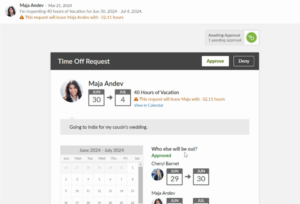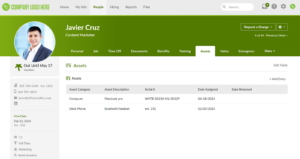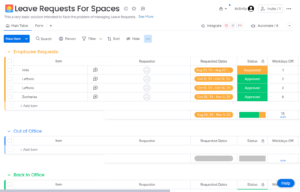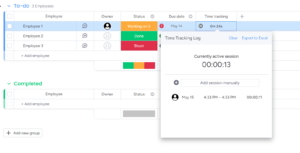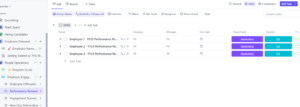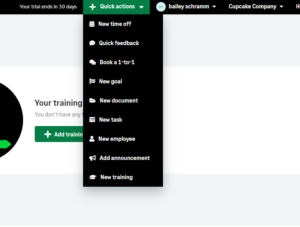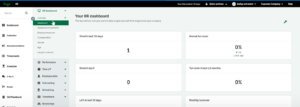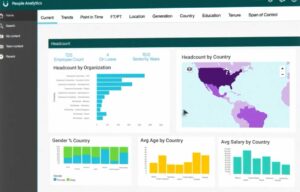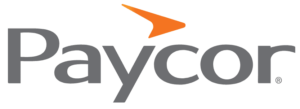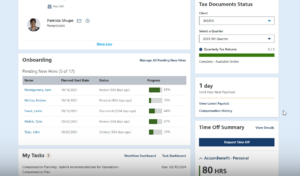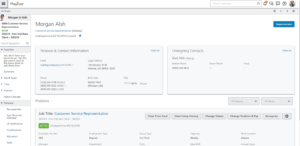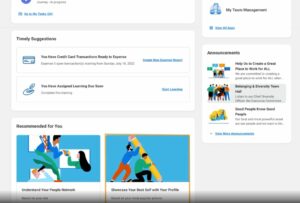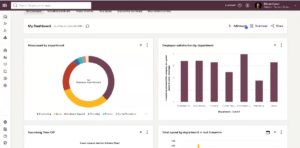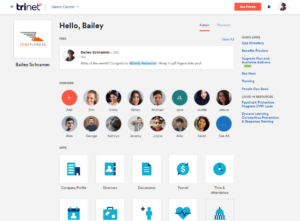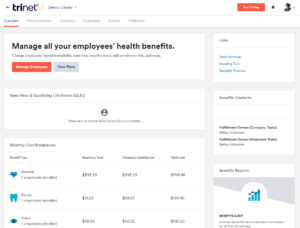Our Top Picks for HR Software
- Most Comprehensive: BambooHR
- Best for Task Management: Monday.com
- Best Flexible Solution for Startups: ClickUp
- Most Flexible Plans: Sage HR
- Best AI Tools: UKG Pro
- Best Payroll Solution: Paycor
- Best Integrated Solution for Enterprises: Workday
- Most Customizable User Permissions: Rippling
- Best for Growing Companies: ADP Workforce Now
- Best Benefits Administration: TriNet
What Is HR Management Software?
HR management software is a broad category that refers to applications and systems that help companies manage their workforce. As we mentioned above, there is a large variety in the specific functionality that HR software offers, which can make it difficult to comparison shop. In general, though, HR software includes features to help companies attract, hire and nurture talent, which can include:
- Recruiting
- Onboarding
- Payroll processing
- Time tracking
- Benefits administration
- Learning management
- Performance management
What Are the Types of HR Software?
Within the HR software category, there are three main types of solutions: HRIS, HCM and HRMS.
A human resources information system (HRIS) is focused on collecting, maintaining and organizing employee information. It uses this information to support key HR functions, such as new hire onboarding and time and attendance tracking.
A human capital management (HCM) system typically does what an HRIS does but with a few more advanced features. These systems are more concerned with the employee lifecycle, focusing on how to create the best possible employee experience for recruiting and onboarding, day-to-day management and career development.
Lastly, human resources management systems (HRMS) are the most advanced type of HR software. They take HRIS and HCM solutions and add a few more behind-the-scenes capabilities, such as succession planning, to help leaders strategically manage their workforce.
| HRIS | HCM | HRMS | |
| Objective | Storage of basic personnel data | Talent management and development | Strategic HR management |
| Key Users | HR generalists | HR teams Managers and supervisors Employees | Senior leadership HR teams Managers and supervisors Employees |
| Main Functions | Employee database File/document storage Org chart Payroll Benefits administration Time tracking Basic reporting | HRIS Functions + Recruiting Onboarding Performance management Employee feedback and engagement Reporting and analytics | HCM Functions + Business intelligence Succession planning Learning and development Compensation management Advanced reporting and analytics |
Who Should Get HR Software?
Any company can benefit from HR software. Many providers offer packages that cater to certain business sizes or industries, so there’s typically a solution out there to fit every organization’s specific needs.
Businesses that are in the earlier stages of growth might look for a simple solution that offers key HR functions, such as payroll processing and employee data management. Based on our research, we recommend BambooHR for this. Or, if you want a bit more control and flexibility over the features you pay for, Sage HR could be a viable option.
Growing and large organizations that operate in multiple locations might need a more strategic solution to help with succession planning, performance management and learning and development on top of core HR features. If this is the case for you, we think a comprehensive and scalable solution like ADP Workforce Now, Rippling or Workday could be a fit.
Top HR Software Factors To Evaluate
During our research, we tested HR platforms, interviewed HR professionals and surveyed HR software users. Here are the factors that came out as most important:
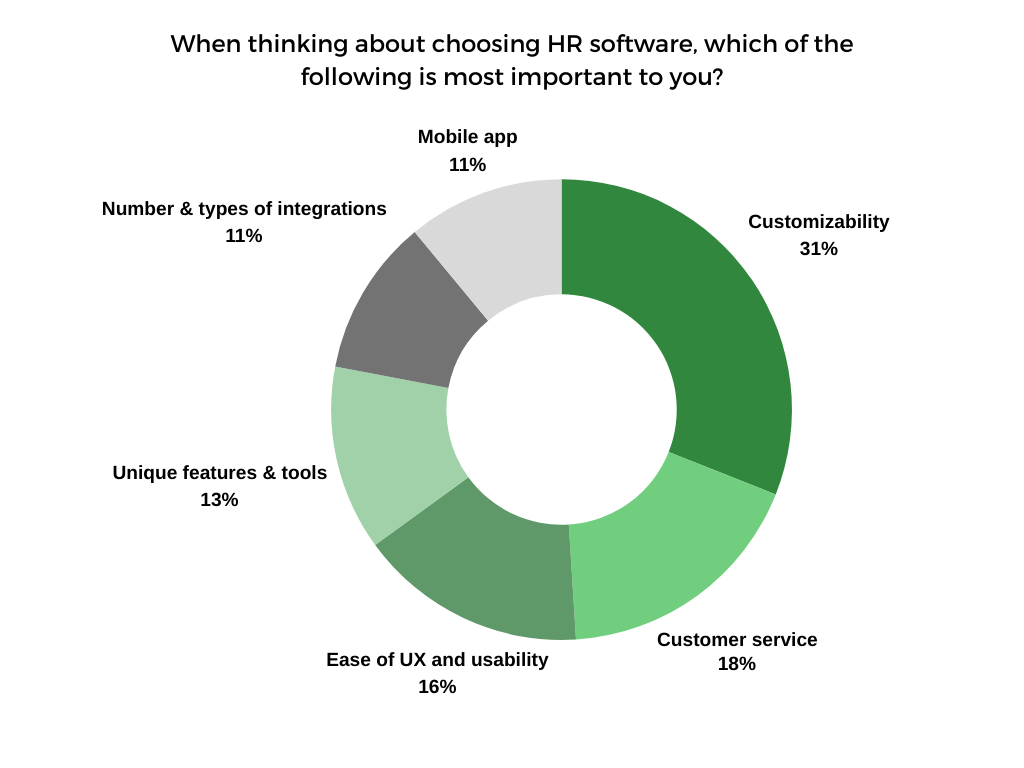
Recruiting
A large portion of our survey respondents — 31% — say that customizability is the most important factor to look for in an HR solution. Reports and dashboards are one of the main places where this customization happens.
Reporting gives leaders an overview of key workforce metrics, such as headcount and employee satisfaction, which they can use to make informed operational decisions. Most HR platforms have pre-built report and dashboard templates that you can use as a starting point and customize to track the metrics that matter most to you.
Below, we list the providers from this review that support report and dashboard customization in their base plan:
| Custom Dashboards | Custom Reports | |
| BambooHR | ✅ | ✅ |
| Monday.com | ✅ | ❌ |
| ClickUp | ✅ | ✅ |
| Paycor | ❌ | ❌ |
| Sage HR | ✅ | ✅ |
| UKG Pro | ✅ | ✅ |
| ADP Workforce Now | ✅ | ✅ |
| Rippling | ✅ | ✅ |
| Workday | ✅ | ✅ |
| TriNet | ❌ | ❌ |
Integrations
Integrations help with seamless data sharing across all of the business applications you use to support operations. This eliminates the need to enter data manually from one platform to the next.
Some HR solutions are more comprehensive than others, offering time tracking, recruiting and other features built in. However, those that don’t offer these functions can still support them with integrations to common third-party applications.
The following is an overview of the types of integrations that the providers on our list offer. We focus on recruiting and onboarding, payroll processing, time tracking, benefits administration and performance management, as these are some of the advanced HR functions that platforms may not have, requiring them to lean on integrations.
| Recruiting and Onboarding | Payroll Processing | Time Tracking | Benefits Administration | Performance Management | |
| BambooHR | ✅ | ✅ | ✅ | ✅ | ✅ |
| Monday.com | ✅ | ❌ | ✅ | ❌ | ❌ |
| ClickUp | ❌ | ❌ | ✅ | ❌ | ❌ |
| Paycor | ✅ | ❌ | ✅ | ✅ | ❌ |
| Sage HR | ❌ | ❌ | ❌ | ❌ | ❌ |
| UKG Pro | ❌ | ❌ | ❌ | ❌ | ❌ |
| ADP Workforce Now | ✅ | ❌ | ✅ | ✅ | ✅ |
| Rippling | ✅ | ✅ | ✅ | ✅ | ✅ |
| Workday | ✅ | ✅ | ✅ | ✅ | ✅ |
| TriNet | ✅ | ❌ | ✅ | ❌ | ✅ |
Note that this table is only for pre-built integrations. These providers may allow users to build custom integrations via API or Zapier, but that isn’t reflected here.
Pricing Value
In the HR software category, it’s common for providers to not provide pricing details on their website. Though this can be frustrating when you’re trying to comparison shop, it typically means that the company offers a custom price and package to fit the specific features you need.
Regardless of your budget, it’s important to find a solution that offers good value for your money. You don’t want to overspend on features you don’t actually need. But, you shouldn’t use price as your only criteria either. Otherwise, you might end up implementing a solution that is missing key capabilities.
To ensure you get good value out of your HR software, start by coming up with a budget and making a list of key features. The former is a lot faster, but the latter may require collaborating with executives, managers and even employees. Here are a few tips to consider during this brainstorming session:
- If you’re looking to upgrade from your existing system, think of the places where your current solution falls short.
- Break the list of features into must-haves and nice-to-haves so that you understand where you have some flexibility.
What’s New for HR in 2024?
Human resources departments are constantly adapting to the changing regulatory landscape, emerging workplace trends and evolving employee needs. In 2024, here are some of the top trends impacting HR.
Remote/Hybrid Work
More companies support remote work in 2024 than before the pandemic. Though a growing number of teams have returned to the office to some extent, it appears that some portion of hybrid work is here to stay.
This has benefits both for employees and employers alike. Employees reportedly save between $600 and $6,000 a year by working from home half of the work week, according to a report by Global Workplace Analytics. According to the same report, companies can save an average of $11,315 per remote employee per year.
AI/Automation
Though artificial intelligence (AI) and automation have been around for some time, there’s a growing focus across all industries on leveraging these advanced technologies to enhance productivity.
In HR, many software solutions are introducing AI-powered tools and automated workflows to reduce the amount of time workers spend on repetitive, manual tasks. These features are also being used to enhance the employee experience. For example, 49% of surveyed HR professionals currently use AI to personalize learning and development activities for their employees.
The Bottom Line
The HR software market is vast, so choosing the right solution for your needs is not always easy. Based on our research, we believe that BambooHR is the best HR platform given its ease of use, comprehensive feature set and various supported integrations. However, each of the platforms on our list provides unique advantages.
No one HR solution is best for all companies. Organizations need to do their own research based on their requirements to find the software that offers them the best value.
Frequently Asked Questions About HR Software
An HR tool is a software or system that a company uses to manage human resources in-house. A PEO is a professional employer organization that handles outsourced HR functions on behalf of a company. Most HR providers offer one or the other, though TriNet and Rippling offer both.
Some of the most common HR functions that HR software can perform include:
- Employee information management
- Time tracking
- Leave management
- Payroll processing
- Recruiting
- Benefits administration
- Onboarding
- Performance management
- Learning and development
HR software can streamline workflows for HR professionals, reducing the amount of manual work required. In turn, this can provide labor cost savings.
The decision to implement HR software is different for every business. However, companies don’t have to wait until they have hundreds of employees to adopt one of these solutions. There are plenty of platforms that are designed for small businesses, streamlining HR functions and improving employee experience on a budget.
Most HR platforms do not offer a free version. However, many offer several packages at varying price points to support different budgets. From this list, the only platform with a free version is ClickUp. Even then, the free plan does not include access to some key HR features, such as time tracking.
How We Chose the Best HR Software
Choosing human resources (HR) software for your organization is an important decision. To help you with it, we at the MarketWatch Guides team have researched and reviewed 50 leading HR software companies, including Paycor, ADP, Workday, Gusto, ZipRecruiter and Clockify. These providers help with some or all of the following HR disciplines:
- Payroll
- Time tracking and workforce management
- Recruiting and job posting
We conducted a survey in 2024 of 200 professionals who were currently using HR software or had used HR software within the past year. We analyzed the results of this survey to determine the following rating criteria:
- Features (25%)
- Value and Pricing (25%)
- User Experience (20%)
- Customer Support (15%)
- Reputation and Reviews (15%)
Visit the full HR methodology page for more details on our rating system.
If you have feedback or questions about this article, please email the MarketWatch Guides team at editors@marketwatchguides.








